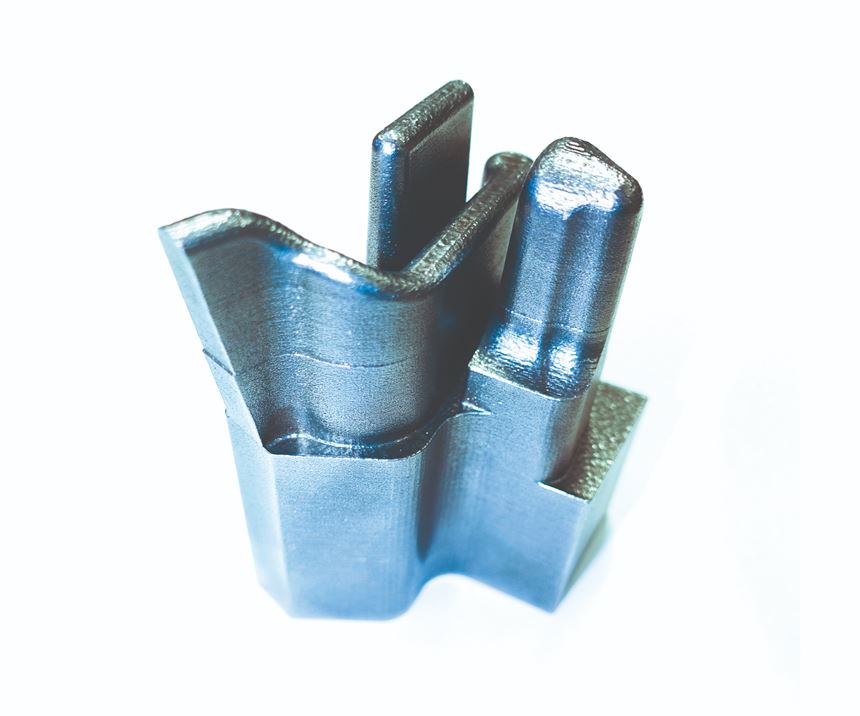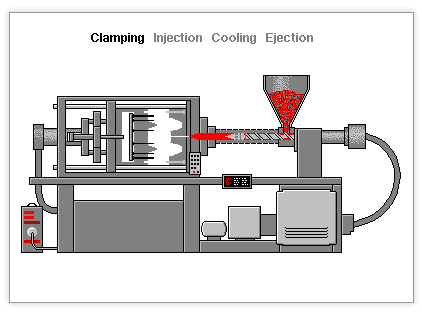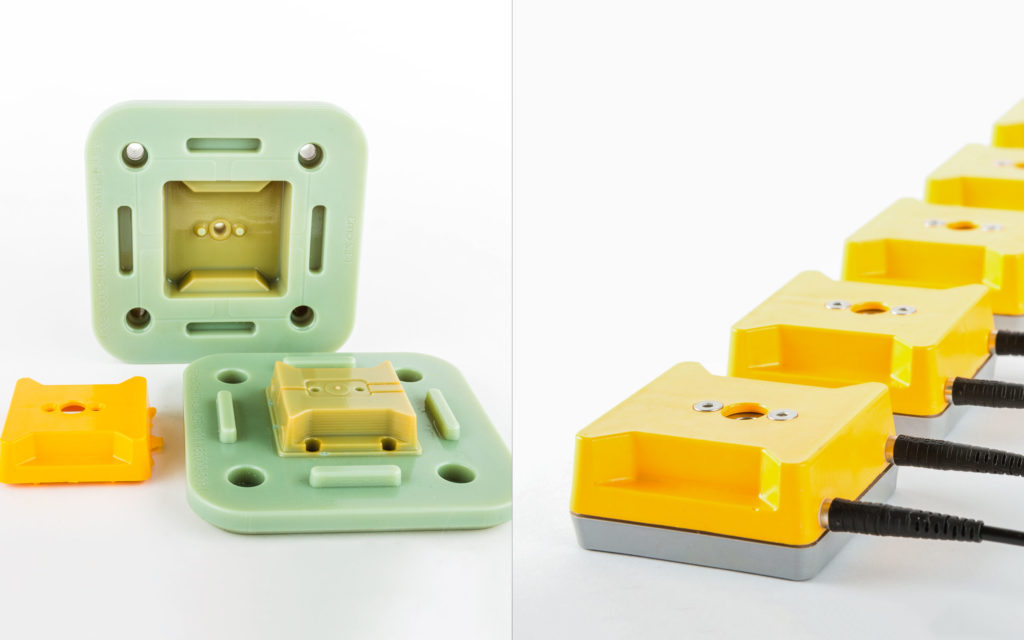As adoption of 3D printing spreads throughout the larger sector of industrial manufacturing, the value of the technology as more than just a rapid prototyping tool is becoming increasingly evident. Even when additive manufacturing (AM) isn’t being used to produce end parts, businesses are learning that it can be used for the fabrication of tooling for their traditional production processes. In particular, 3D printing molds and dies for injection molding and die casting holds a lot of potential due to the various benefits that AM offers in terms of making custom, on-demand and complex parts.
3D-Printed Molds
The most common for mass manufacturing plastic parts, injection molding involves injecting liquid plastic into a mold at high pressure. Filling all of the cavities of the mold, the plastic hardens, and the finished part is removed. Most often, the polymers used are thermoplastics, which are melted at high temperatures and cool upon entering the mold.
Typically, molds are precision-machined from aluminum or steel, which can cost from thousands to hundreds of thousands of dollars. Therefore, injection molding is most cost-effective at high volumes in making tens of thousands to millions of parts. For low-run injection molding of 50 to 100 parts, 3D printing can be a more cost-effective option.
Other reasons 3D printing might be chosen for mold production include the short turnaround time. A printed mold can be made in just a few days or a couple of weeks, compared to a five- to seven-week lead time for molds made with a CNC machine.
Depending on the exact requirements of the parts, the AM technology chosen need not be metal. Instead, material jetting and SLA can be used to make molds with high accuracy and good surface finish. This is particularly true for smaller parts, less than 150 mm in size.
As 3D Hubs explains in a particularly useful design guide for 3D printing injection molds, aluminum frames are often used to lend support for 3D-printed, plastic mold inserts against the pressure and heat of the injection process. Without such a frame, molds are more likely to warp from continued use, but conformal cooling channels can be more easily integrated into the plastic mold. If you’re 3D printing a mold out of metal in the first place, however, you don’t have to worry about this.
3D-Printed Dies
Die casting is a process that is very similar to injection molding except that you swap out melted plastic for molten metal. The liquid metal is injected at high pressure into a metal die (the same as a mold in this case), which fills the die’s cavities and hardens to form a metal part. Die casting is usually used for large quantities of small- to medium-sized parts. You’ll find die casting used for such components as belt buckles and car engines.

A die casting insert with integrated cooling channels 3D printed by Exco Engineering. Image courtesy of Exco Engineering.
3D printing dies has many of the same benefits as producing molds for injection molding with AM: fast turnaround and the ability to produce complex geometries. 3D printing can be much more cost-effective when the die will be used for small batch production.
Generally dies must be made from metal to survive the high heat and pressure of the die casting process, which isn’t necessarily true for some investment casting techniques. Companies that specialize in 3D printing dies and inserts (used to modify dies and molds) report having a hard time selecting the proper materials. Canadian company Exco Engineering has sometimes chosen maraging steel over H13 tool steel (which might more normally be used for traditional die-casting) due the high porosity and cracking with they’ve experienced 3D-printed molds made from H13. However, as we’ll discuss in a future post, there are technologies that open up the possibility of using multiple metals to achieve certain results for 3D-printed dies.
In the subsequent articles of this series, we will look at some of the advantages of 3D-printed molds and dies for injection molding and die casting, as well as some of the specific AM processes used and some specific applications.
The post 3D Printing for Molds and Dies, Part 1 appeared first on 3DPrint.com | The Voice of 3D Printing / Additive Manufacturing.




7 Replies to “3D Printing for Molds and Dies, Part 1”
Comments are closed.